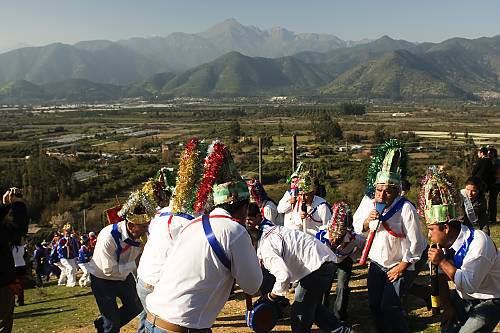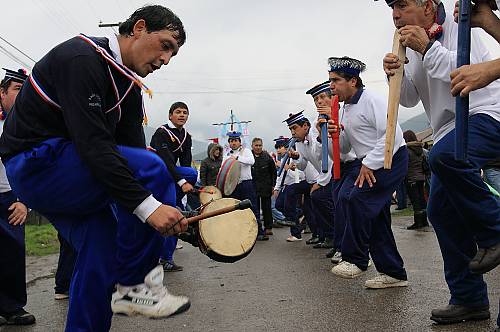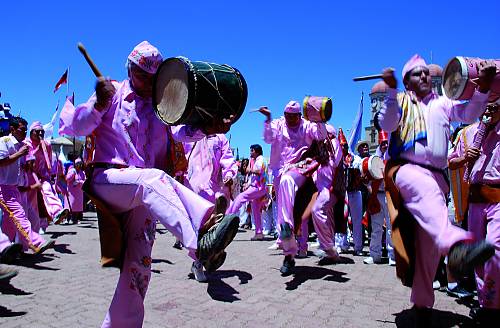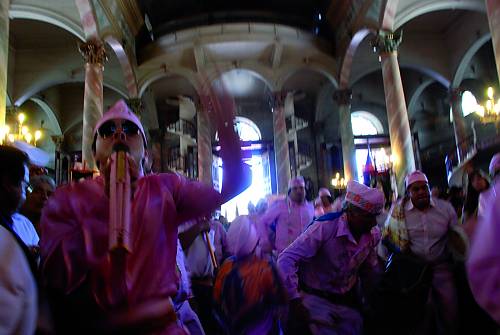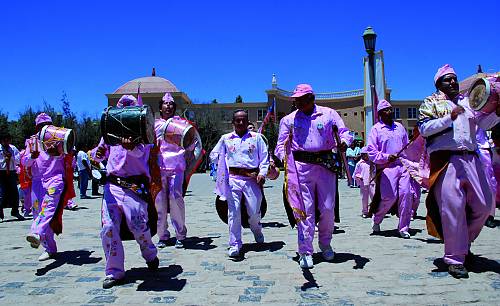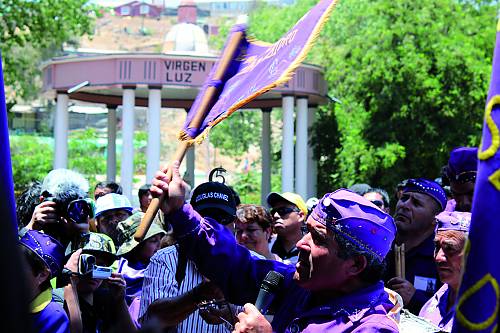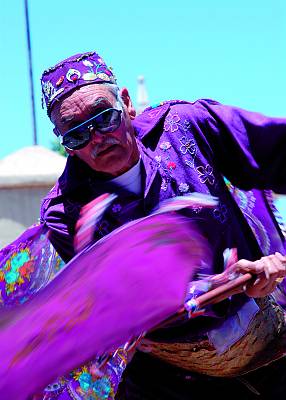Baile Chino
Inscribed in 2014 (9.COM) on the Representative List of the Intangible Cultural Heritage of Humanity

Bailes Chinos are brotherhoods of musicians who express their faith through music, dance and singing in the context of commemoration festivities. The practice stretches mainly from the area known as the Norte Chico to the central region of Chile and comprises five fully differentiated styles, each named after the valley or basin where it is most prevalent. Organized mainly by men from rural areas, Baile Chino dances consist of jumps and flexing movements of the legs, performed to the rhythm of isometric instrumental music played on drums and flutes of pre-Columbian origin. The leader sings memorized or improvised rhyming couplets in stanzas that recount holy stories and address religious subjects. He is accompanied by an equal number of musicians and dancers organized in two symmetric columns. A drummer leads the choreography and controls the tempo of the music. Each group also has a flag bearer and guards, who are usually women. The music, dances and couplets are learnt through direct observation, imitation and transmission in the family. Bailes Chinos are a tool for social participation providing prestige to those involved. They function as a model for social integration and cohesion to which almost the entire local community subscribes, out of a sense of identity and solidarity.
